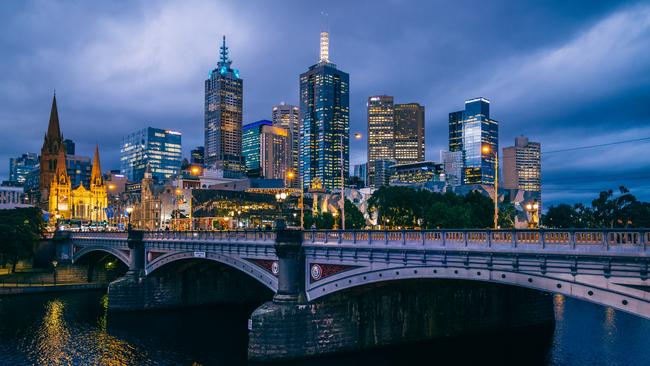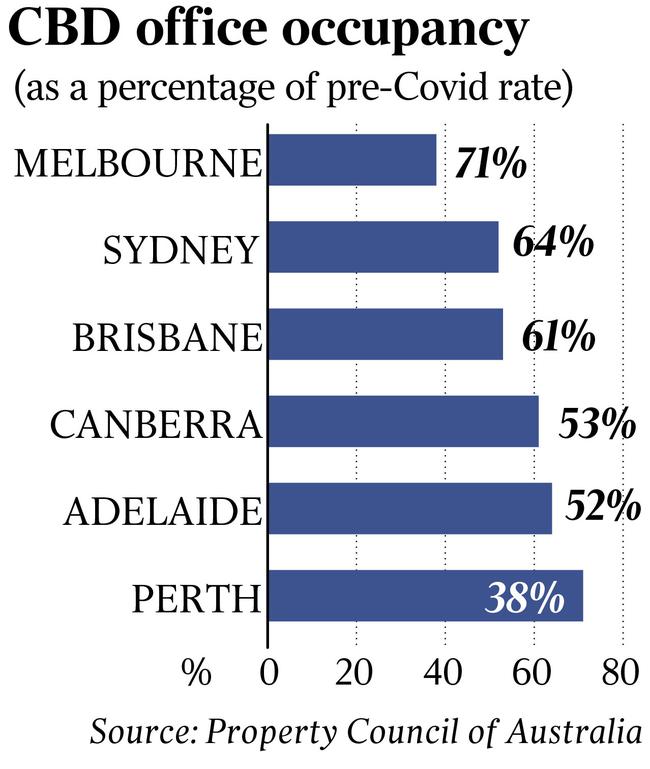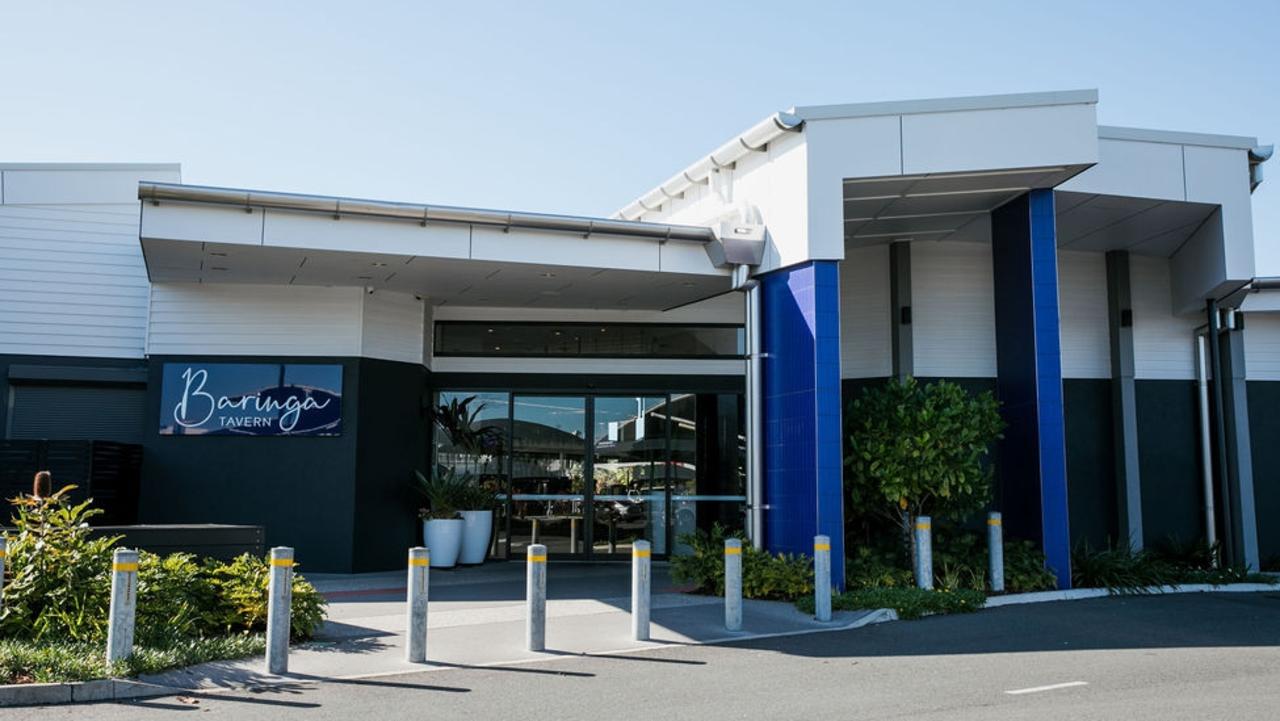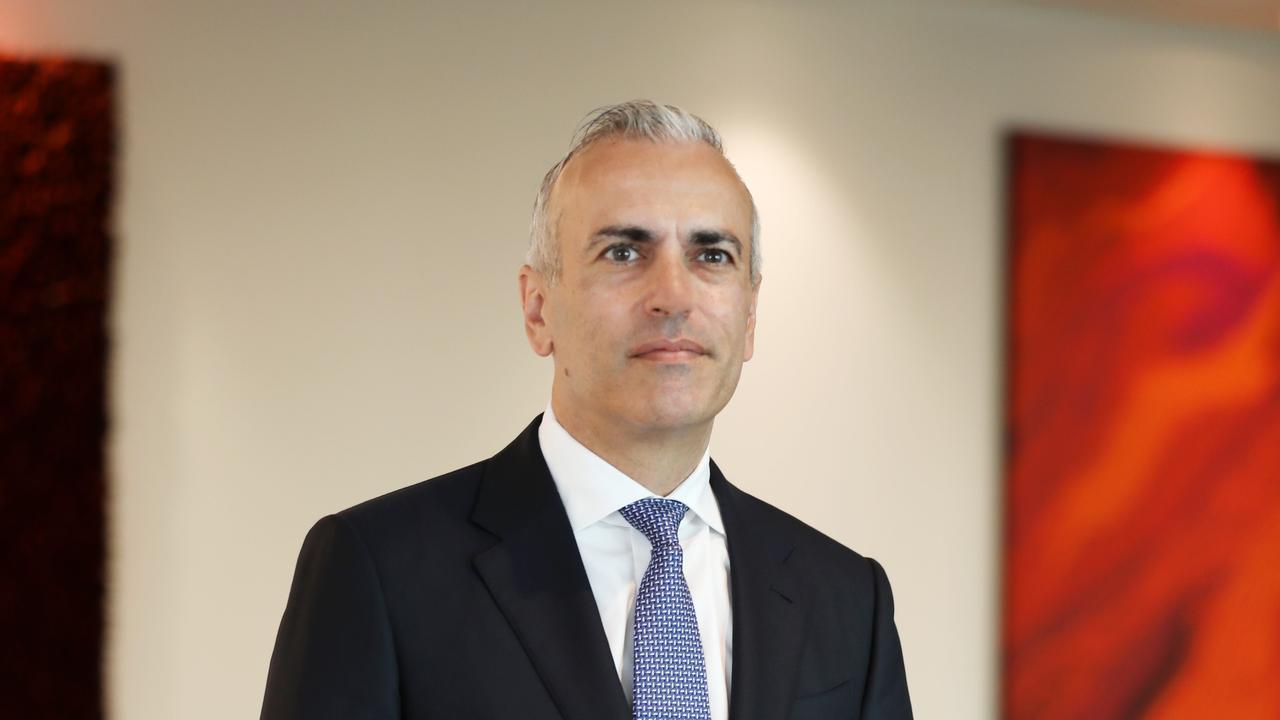Office occupancy blues weigh on CBD recovery rates as working from home extends
Omicron and flu infections drove office occupancy rates in most major cities backwards in July, as corporate Australia girds for more of the workforce to stay at home longer.

The wave of Omicron and flu infections drove office occupancy rates in most major cities backwards in July, as corporate Australia girds for more of the workforce to stay at home longer.
Big companies are turning to hybrid work policies as they attempt to retain staff, allowing for a mix of working from home and in the office, but the fallout is being felt across central business districts where a slow retail recovery is starting to emerge.
In the depths of a harsh July winter, Melbourne’s office occupancy dropped from 49 to 38 per cent, Sydney from 55 to 52 per cent, Brisbane from 64 to 53 per cent and Adelaide from 71 to 64 per cent.
The Property Council of Australia dubbed the figures from its latest office occupancy survey for July as “disappointing” and blamed rising Covid-19 case numbers in the period.
Canberra and Perth were the only markets to record an increase in office occupancy, from 53 to 61 per cent and 65 to 71 per cent respectively, the survey showed.
Property Council chief executive Ken Morrison said the much hoped for return to the office had stalled, with city economies also suffering from the shift to hybrid work with workers only returning a few days a week.
“Office occupancy numbers have gone backwards for the first time in six months as a wave of Omicron and flu cases kept workers away from the office,” Mr Morrison said.
“We have been seeing a steady increase in the number of workers returning to offices, but this stalled in June and has now declined in most capitals, which is disappointing but unsurprising,” he said.

Landlords and developers believe they can win workers back to major cities with modern office facilities retooled to handle the pandemic, but major companies are reluctant to force staff back due to health concerns and the tight job market.
Commonwealth Bank, one of the country’s biggest employers, on Wednesday spruiked its commitment to hybrid working.
“As we move toward a post-Covid environment, our hybrid model will continue to be an important way for some of our people to work,” the bank said.
The CBA is encouraging managers to discuss “operating rhythms” with their teams to “empower them to deliver outcomes and support learning, while providing options for working flexibly”.
The absence of workers from cities on a full-time basis is putting both large retail owners, like Westfield operator Scentre and Vicinity Centres, and office landlords under pressure.
Real estate agency CBRE said Sydney is leading the national CBD retail recovery, with the city’s vacancy rate declining in the first half of the year.
The Sydney CBD retail vacancy declined from 7.6 per cent to 6.9 per cent in the first half, with opportunistic expansion by premium and luxury retailers helping to drive demand.
The very top end of the market has been relatively unscathed by either the pandemic or recession fears as retailers try to lock in top positions.

But across Australia the CBD retail vacancy rate increased 350 basis points to 17.4 per cent in the half, with Sydney recording the lowest vacancy, followed by Melbourne (15.9 per cent), Adelaide (18 per cent), Brisbane (18.9 per cent) and Perth (28.4 per cent).
“We have seen a slight increase in overall vacancy this half across Australia. However, as the return to the office gathers pace in the coming months, we expect to see more retailer mandates for prime mall locations across the country,” CBRE Australia head of retail leasing Leif Olson said. He cited the biggest improvements in prime stock, with vacancy rates rising in secondary, non-core locations.
Property owners are putting much stock in slowing infection numbers.
“Looking ahead, we are encouraged by the fact that this Omicron wave seems to have peaked and that spring is around the corner,” Mr Morrison said. “Hopefully this means the recovery momentum can resume.”
But he warned that low levels of CBD occupancy needed to be factored in when governments were considering measures to handle the pandemic.
“We know office occupancy has been slow to recover, unlike other indicators which snap back quickly,” Mr Morrison said.
UBS analysts warned last week that work from home would reduce the CBD office worker population by 15 per cent, causing a 6 per cent decrease in daily CBD population, which it called a “structural shift”.
The bank estimates that the 15 per cent reduction in CBD office workers would translate to contracted vacancy of between 8-13 per cent for the office market in the next financial year, with heavyweights Dexus and Mirvac Group to be the most impacted A-REITs.






To join the conversation, please log in. Don't have an account? Register
Join the conversation, you are commenting as Logout